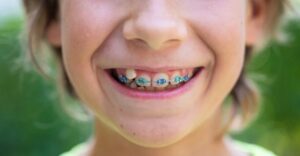When Lisa’s 10-year-old son Jake was told he might need braces, her first question was: “How long is this going to take?” Like many parents, she was worried about time, commitment, and whether her child could stick it out.
The truth is, orthodontic treatment time isn’t the same for everyone—but knowing the typical timelines can help you feel more prepared and confident as a parent.
1. What Affects Treatment Time?
Several factors can change how long your child may need braces or other orthodontic care:
The type of problem
If it’s just crooked teeth, it’s usually quicker.
If it involves jaw alignment (like underbite or overbite), it takes longer.
Your child’s age
Early treatment (ages 7–10) can sometimes shorten or simplify future braces.
During growth spurts (ages 11–14), bones are easier to guide.
In adults, bones are more set, so treatment can take longer.
How well your child follows instructions
Skipping appointments, not wearing rubber bands, or poor brushing can delay results.
The kind of braces used
Traditional metal braces, clear aligners (like Invisalign), or removable expanders can all take different amounts of time depending on the issue.
2. Common Orthodontic Treatment Timelines (Estimated)
Here’s a helpful chart to give you an idea of how long treatment usually takes:
| Type of Treatment | Typical Age | Estimated Duration |
|---|---|---|
| Early intervention (e.g., expanders) | 7–10 years | 6 months – 1.5 years |
| Full braces (mild crowding) | 11+ years | 12 – 18 months |
| Moderate crowding or bite issues | 11+ years | 18 – 24 months |
| Severe bite issues (may include surgery) | 11+ years | 2 – 3 years |
| Clear aligners (Invisalign) | Teens & Adults | 12 – 24 months |
Note: After braces come off, your child will need a retainer to keep their teeth in place—this can last 1–2 years or more.
3. What Can Parents Do to Help?
- Start early: The American Association of Orthodontists recommends an orthodontic check-up by age 7.
- Talk positively: Avoid saying “Your teeth look bad.” Try “Let’s help your smile grow strong and healthy.”
- Make it fun: Let your child pick brace colors or a new toothbrush.
- Keep appointments: Missing visits slows progress.
- Stay on top of brushing: Braces trap food—help your child brush and floss carefully every day.
4. Final Thoughts
Orthodontics takes time, but the benefits last a lifetime—better chewing, easier cleaning, and a confident smile. With patience and teamwork between your family and your orthodontist, your child can go through the journey smoothly and come out smiling bright.













